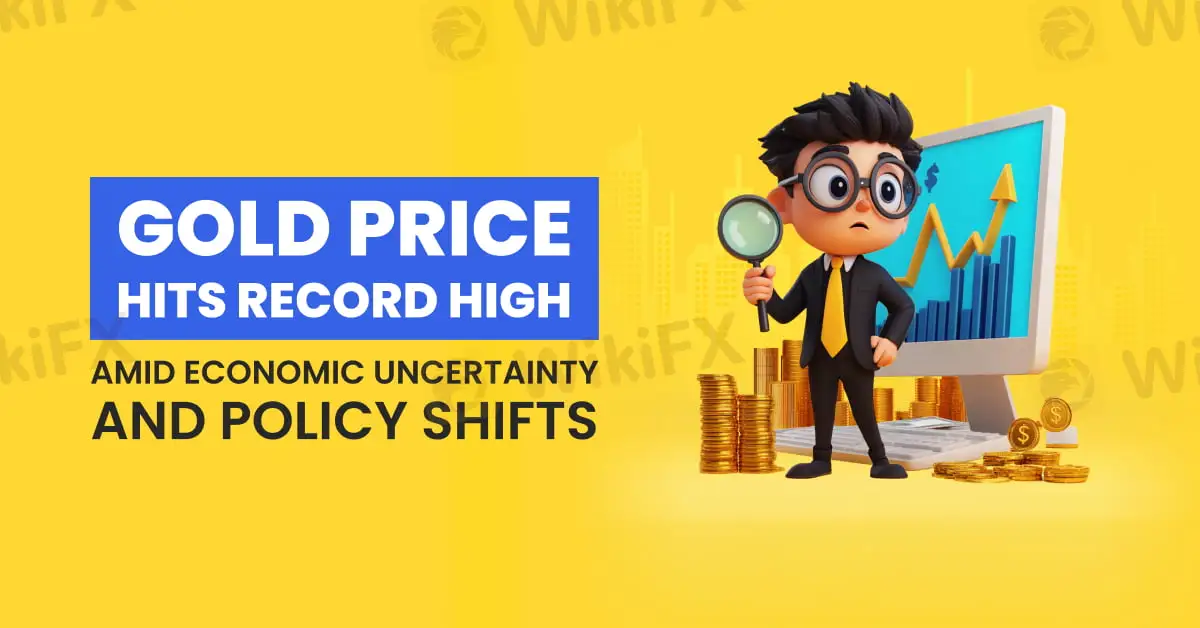Gold Price Hits Record High Amid Economic Uncertainty and Policy Shifts
Abstract:Gold prices soared to an all-time high, nearing the key $3,000 per ounce threshold, as investors responded to heightened tariff uncertainty and growing expectations of monetary policy easing by the U.S. Federal Reserve.

Gold prices soared to an all-time high, nearing the key $3,000 per ounce threshold, as investors responded to heightened tariff uncertainty and growing expectations of monetary policy easing by the U.S. Federal Reserve. Spot gold reached approximately $2,994 per ounce, marking a historic peak driven by market anxieties and shifting economic policies.

Industry analysts anticipate further gains, with forecasts placing gold prices in the range of $3,000 to $3,200 per ounce over the course of the year. The ongoing global economic landscape, particularly the unpredictability of U.S. trade policies, has strengthened golds appeal as a safe-haven asset. The volatility surrounding trade negotiations and tariff adjustments has led investors to hedge their positions, favouring the precious metal in times of geopolitical and financial instability.
The Federal Reserves upcoming monetary policy meeting, scheduled for next Wednesday, remains a key focal point for markets. The central bank is widely expected to maintain its benchmark interest rate within the 4.25% to 4.50% range. However, policymakers face challenges in assessing the broader economic impact of ongoing trade disputes. Analysts suggest that the uncertainty surrounding tariff changes has made economic forecasting more complex, requiring the Fed to rely on evolving economic data to shape its next steps. The central bank has already reduced interest rates by 100 basis points since September but halted its easing cycle in January. Market expectations indicate a potential resumption of rate cuts as early as June.
Recent economic data has presented a mixed picture. The latest figures from the U.S. Labor Department revealed that producer prices remained unchanged in February, while the consumer price index recorded a 0.2% increase, following a more substantial 0.5% rise in January. These developments are being closely monitored by investors assessing inflation trends and the potential direction of monetary policy.
Beyond macroeconomic factors, strong demand from exchange-traded funds (ETFs) and continued central bank purchases have further propelled gold prices upward. Analysts highlight that, in addition to geopolitical tensions, the persistent uncertainty generated by shifting trade policies has reinforced investor appetite for the precious metal. As market conditions evolve, gold remains a key asset for those seeking stability amid financial turbulence.
With multiple forces at play, including global trade dynamics, Federal Reserve policy shifts, and inflationary pressures, golds trajectory remains a critical point of interest for investors worldwide. As prices approach the significant $3,000 milestone, market participants will continue to monitor economic indicators and central bank actions to gauge the future direction of the gold market.

Read more

CySEC reaches €20k settlement with ZFN EUROPE
According to report, the Cyprus Securities and Exchange Commission (CySEC) announced today that it has entered into a settlement agreement with ZFN EUROPE Ltd for the amount of €20,000. This settlement resolves a regulatory inquiry into ZFN Europe’s compliance with Cyprus’s Investment Services and Activities and Regulated Markets Law of 2017, as amended.

Broker Comparsion: FXTM vs AvaTrade
FXTM and AvaTrade are two well-established online brokers offering forex and CFD trading across global markets. Both enjoy strong reputations and high ratings on WikiFX—FXTM holds an AAA overall rating, while AvaTrade scores 9.49/10, indicating they’re regarded as reliable choices by the community. However, since brokers have great reputation in the industry, how do we know which one is more suitable for individuals to invest in? Today's article is about the comparison between FXTM and AvaTrade.

Pi Network: Scam Allegations Spark Heated Debate
A whistleblower report has surfaced, casting doubt on the legitimacy of Pi Network, alleging psychological manipulation, opaque operations, and potential financial exploitation. What is your take on this?

Webull Listed on Nasdaq Following SPAC Merger with SK Growth
Webull and SK Growth complete their business combination, with Webull now trading under the ticker “BULL.” App hits 50 million downloads worldwide.
WikiFX Broker
Latest News
Love, Investment & Lies: Online Date Turned into a RM103,000 Scam
Broker Took 10% of User's Profits – New Way to Swindle You? Beware!
Pi Network: Scam Allegations Spark Heated Debate
Broker Comparsion: FXTM vs AvaTrade
Account Deleted, Funds Gone: A New Broker Tactic to Beware Of?
Broker’s Promise Turns to Loss – Funds Disappear, No Compensation!
StoneX Subsidiary, Gain Global Markets Bermuda, Penalized for Trading Misconduct
El Salvador and U.S. Launch Cross-Border Crypto Regulatory Sandbox
The Instagram Promise That Stole RM33,000
Coinbase Launches Bitcoin Yield Fund for Institutional Investors
Rate Calc
